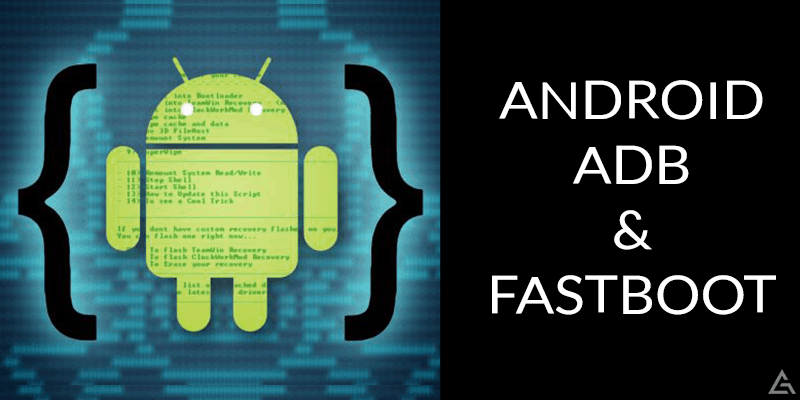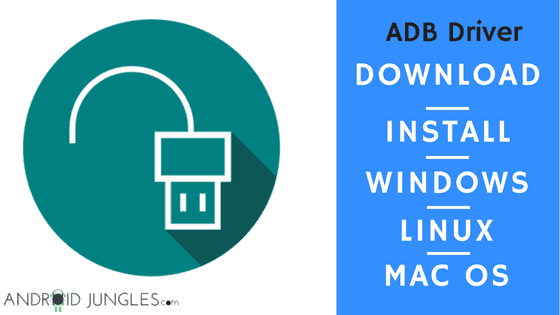Android Adb Driver For Mac
Make a new folder on your MAC desktop or anywhere else where you can easily locate it. Name the folder “Android”. Download Android SDK tools for MAC or ADBFastboot.zip. When the SDK download ends, extract the data from adt-bundle-mac-x86 to the “Android” folder on your desktop. ADB and Fastboot drivers will be automatically downloaded and installed on your Mac OS. Step 7: To confirm the installation, go to the extracted android-sdk-macosx directory and then open the platform-tools folder. Here you will see ADB and fastboot apps, along with several other tools in this directory.
If you are developing on Windows and want to connect a device for testing,then you need to install the appropriate USB driver. This pageprovides links to the web sites for several original equipment manufacturers (OEMs),where you can download the appropriate USB driver for your device.
Install ADB and fastboot driver on Mac OS Method 1: – Download the Android zip file and extract it on the desktop. Now Open Terminal on Mac PC by Pressing Command + Spacebar key combination to open Spotlight search and type ‘ Terminal ’ on that. Type ‘ cd Desktop/Android ’ on Terminal. Adb driver free download - Digidesign CoreAudio Driver, USB Audio ASIO driver, IOXperts USB WebCam Driver, and many more programs. All Windows Mac iOS Android.
If you're developing on Mac OS X or Linux, then you shouldn't need a USB driver.Instead read Using Hardware Devices.
To connect and debug with any of the Google Nexus devices using Windows, youneed to install the Google USB driver.
Install a USB driver
First, find the appropriate driver for your device from the OEM driverstable below.
Once you've downloaded your USB driver, follow the instructions below to install or upgrade thedriver, based on your version of Windows and whether you're installing for the first timeor upgrading an existing driver. Then see Using Hardware Devices forother important information about using an Android device fordevelopment.
Caution:You may make changes to android_winusb.inf file found insideusb_driver (for example, to add support for other devices),however, this will lead to security warnings when you install or upgrade thedriver. Making any other changes to the driver files may break the installationprocess.



Windows 10
To install the Android USB driver on Windows 10 for the first time, do the following:
- Connect your Android device to your computer's USB port.
- From Windows Explorer, open Computer Management.
- In the Computer Management left pane, select Device Manager.
- In the Device Manager right pane, locate and expand Portable Devices or Other Devices, depending on which one you see.
- Right-click the name of the device you connected, and then select Update Driver Software.
- In the Hardware Update wizard, select Browse my computer for driver software and click Next.
- Click Browse and then locate the USB driver folder. For example, the Google USB Driver is located in
android_sdkextrasgoogleusb_driver. - Click Next to install the driver.
Windows 8.1
To install the Android USB driver on Windows 8.1 for the first time, do the following:
- Connect your Android device to your computer's USB port.
- Access search, as follows:
Touch screen: On your computer, swipe in from the right edge of the screen and tap Search.
Using a mouse: Point to the lower-right corner of the screen, move the mouse pointer up, and then click Search.
- In the search box, type into and then click Device Manager.
- Double-click the device category, and then double-click the device you want.
- Click the Driver tab, click Update Driver, and follow the instructions.
Windows 7
To install the Android USB driver on Windows 7 for the first time, do the following:
- Connect your Android device to your computer's USB port.
- Right-click on Computer from your desktop or Windows Explorer, and select Manage.
- Select Devices in the left pane.
- Locate and expand Other device in the right pane.
- Right-click the device name (such as Nexus S) and select Update Driver Software. This will launch the Hardware Update Wizard.
- Select Browse my computer for driver software and click Next.
- Click Browse and locate the USB driver folder. (The Google USBDriver is located in
android_sdkextrasgoogleusb_driver.) - Click Next to install the driver.
Or, to upgrade an existing Android USB driver on Windows 7 and higher with the newdriver:
- Connect your Android device to your computer's USB port.
- Right-click on Computer from your desktop or Windows Explorer, and select Manage.
- Select Device Manager in the left pane of the Computer Management window.
- Locate and expand Android Phone in the right pane.
- Right-click on Android Composite ADB Interface and select Update Driver. This will launch the Hardware Update Wizard.
- Select Install from a list or specific location and click Next.
- Select Search for the best driver in these locations; uncheckSearch removable media; and check Include this location in thesearch.
- Click Browse and locate the USB driver folder. (The Google USBDriver is located in
android_sdkextrasgoogleusb_driver.) - Click Next to upgrade the driver.
Get OEM drivers
| OEM | Driver URL |
|---|---|
| Acer | http://www.acer.com/worldwide/support/ |
| alcatel one touch | http://www.alcatelonetouch.com/global-en/support/ |
| Asus | https://www.asus.com/support/Download-Center/ |
| Blackberry | https://swdownloads.blackberry.com/Downloads/entry.do?code=4EE0932F46276313B51570F46266A608 |
| Dell | http://support.dell.com/support/downloads/index.aspx?c=us&cs=19&l=en&s=dhs&~ck=anavml |
| Fujitsu | http://www.fmworld.net/product/phone/sp/android/develop/ |
| HTC | http://www.htc.com/support |
| Huawei | http://consumer.huawei.com/en/support/index.htm |
| Intel | http://www.intel.com/software/android |
| Kyocera | http://www.kyocera-wireless.com/support/phone_drivers.htm |
| Lenovo | http://support.lenovo.com/us/en/GlobalProductSelector |
| LGE | http://www.lg.com/us/support/software-firmware |
| Motorola | https://motorola-global-portal.custhelp.com/app/answers/detail/a_id/88481/ |
| MTK | http://online.mediatek.com/Public%20Documents/MTK_Android_USB_Driver.zip (ZIP download) |
| Samsung | http://developer.samsung.com/galaxy/others/android-usb-driver-for-windows |
| Sharp | http://k-tai.sharp.co.jp/support/ |
| Sony Mobile Communications | http://developer.sonymobile.com/downloads/drivers/ |
| Toshiba | http://support.toshiba.com/sscontent?docId=4001814 |
| Xiaomi | http://www.xiaomi.com/c/driver/index.html |
| ZTE | http://support.zte.com.cn/support/news/NewsDetail.aspx?newsId=1000442 |
If you don't see a link for the manufacturer of your device here, go to the support section of the manufacturer's website and search for USB driver downloads for your device.
In order to take full advantage of your Android based handset you first have to free its system from the factory restrictions and then you need to apply customization and optimization procedures for improving the performances and for upgrading the Android experience. But in order to complete such operations you might need to use the Android SDK and the Android Debug Bridge. Well, if ADB is being required, then you can anytime use the present guide for learning on how to install ADB on a Mac OS X or Linux based device.
ADB, or Android Debug Bridge is a tool that is being often required when trying to root, unlock the bootloader or updating your Android devices with a custom ROM firmware. ADB consists in some commands that are being introduced in your computer’s terminal offering access to your phone’s (or tablet) internal system and in-built programs. By using these commands (which can be learned by using several dedicated step by step guides) you can tweak or troubleshoot your handset therefore, installing ADB on your Mac OS X, or Linux device is a must have.
Be aware as this tutorial is suitable and must be applied only for those who own a Mac OS X or Linux based computer; if you want to learn how to install the Android SDK / ADB on Windows then use another method (search through our how to section for the same). Now, the steps from below are being divided: one section is for Mac while the other is for Linux, so use the procedure you need; don’t mess things up.
The best part is that you don’t have to make any preparation tasks as the installation procedure can be easily applied. You just have to follow the below steps and in the end your Mac / Linux will be installed with ADB and you will be ready to tweak your Android powered smartphone / tablet. As mentioned, usually, the adb commands are being used when trying to unchain the devices from the factory and default restrictions so if you want to gain access and control to your phone then completing this tutorial is not an option for you.
Of course, most of the mentioned operations can be performed without using ADB but in a more complex and risky way. Therefore, if you are an entry level or an inexperienced user then it is strongly recommended to use the adb based tutorials instead of trying to complete other procedures that can damage or brick your device. Anyway, let’s head to the installation process as you are prepared for the same. Stick to the steps from below and don’t do things by yourselves.
How to Install / Set Up ADB on Mac OS X
- First, download the Android SDK tool from here.
- Save the file on the desktop.
- Extract the file and move the obtained folder to the root of your hard drive.
- Rename the folder Android-SDK.
- On the device you need to open terminal.
- On the same enter “C:/Android-SDK /tools/android”.
- The file manager will be displayed.
- From there select “Available Packages -> Android Repository”.
- Up next choose “Android SDK Platform-tools” and click on install selected button.
- ADB is now there on your computer. In order to set it up you will have to add the “export PATH=${PATH}:/Android-SDK/tools:/platform-tools” line on the end of the ~/.bashrc or ~/.profile or ~/.bash_profile configuration files
- If that file is not there you can anytime create it by choosing “~/.profile”.
How to Install / Set Up ADB on Linux
Adb Download Mac
- You need to get this file (the download link is here) and extract it to “~/bin”.
- Up next just go to /etc/udev/rules.d and type the following commands (see the image from below):
[caption align='aligncenter' width='498'] Type in terminal:[/caption]
- Take your phone / tablet and enable the USB debugging option; you can do it by going to “Settings -> Applications -> Development -> USB debugging”.
- Now, use the USB cable and connect your handset with the computer.
- Open terminal on your PC and type “adb devices”.
- A list of devices will be displayed; if that happens, you are done.
Adb For Mac
Well, that was all for today. That was the how to guide that can be used by those who need to install / Set Up ADB on Mac OS X / Linux. Therefore now you have what it takes in order to complete other complex operations, such as root, unlock bootloader, update with custom ROM firmware and so on. If you have questions related to the above explained step by step guide or if you just want to share your impressions or talk with us use the comments section from below. Also, for other tutorials check out our how to section as you will find everything you need there.
